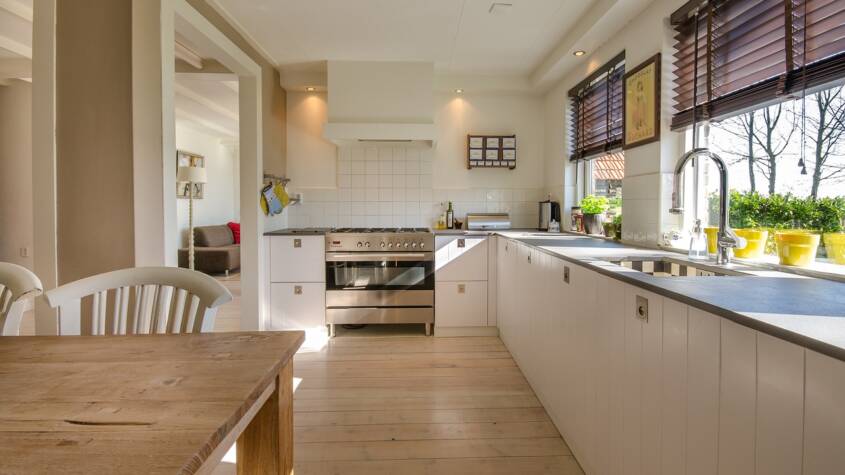
When it comes to kitchen cabinets design, the choices can be overwhelming due to the variety of styles, materials, and finishes available. Selecting the right design not only enhances the aesthetic appeal of a kitchen but also maximizes functionality and storage. This balance between beauty and practicality is essential for anyone looking to remodel or update their kitchen space.
Cabinets serve as the backbone of kitchen organization, influencing everything from storage solutions to the overall ambiance of the room. Designers and homeowners alike understand that the right cabinets can transform a mundane kitchen into a focal point of the home, reflecting personal taste and lifestyle needs.
In exploring kitchen cabinets, it is important to consider current trends, innovative materials, and timeless styles. Understanding these elements can lead to informed choices that effectively unite style and utility, ensuring that the kitchen remains a welcoming and efficient environment.
Fundamentals of Kitchen Cabinet Design
Effective kitchen cabinet design requires careful consideration of layout, materials, and styles. Understanding these fundamental aspects helps create a functional and aesthetically pleasing kitchen space.
Layout and Dimension Considerations
When designing kitchen cabinets, precise measurements are crucial. Homeowners should start by measuring the kitchen space, noting the locations of windows, doors, and appliances. This ensures that cabinetry fits seamlessly without obstructing other elements.
Key dimensions to consider:
- Cabinet height: Standard kitchen cabinet heights range from 30 to 36 inches.
- Depth: Base cabinets are typically 24 inches deep, while wall cabinets may vary from 12 to 24 inches.
- Clearance: A minimum of 36 inches between the countertop and upper cabinets promotes ease of use.
An organized layout enhances both functionality and design. The work triangle concept—aligning the stove, sink, and refrigerator—facilitates efficient cooking workflows.
Choosing the Right Materials
The choice of materials significantly impacts the durability and appearance of kitchen cabinets. Common materials include:
- Plywood: Offers strength and resistance to moisture, ideal for kitchens.
- Solid wood: Provides a classic look and longevity, but may require maintenance.
- MDF (Medium-Density Fiberboard): Economical and versatile, suitable for painted finishes.
Homeowners should also consider finishes. Laminate provides a wide range of colors and patterns, while stains enhance natural wood grain. Opting for high-quality materials ensures cabinets withstand daily use and retain their appeal.
Cabinet Types and Styles
Understanding various cabinet types and styles allows for customized kitchen design. The main types include:
- Base cabinets: Support countertops and provide storage for pots and pans.
- Wall cabinets: Utilize vertical space for storing dishes and glassware.
- Tall cabinets: Ideal for pantry storage or housing appliances.
Design styles also play a critical role. Popular options include:
- Shaker: Known for its clean lines and simple aesthetic.
- Modern: Features minimalistic designs with smooth surfaces.
- Traditional: Emphasizes intricate details and ornate hardware.
Combining different cabinet types and styles can create a cohesive and functional kitchen design tailored to individual tastes.
Incorporating Functionality and Aesthetics
Effective kitchen cabinet design balances both practicality and visual appeal. By considering storage options, lighting, color schemes, and hardware, a kitchen can become more functional while also reflecting personal style.
Maximizing Storage Space
Optimal kitchen cabinet design incorporates strategies that enhance storage capacity. Utilizing tall cabinets can take advantage of vertical space, reaching ceilings to maximize storage.
Pull-out shelves and lazy Susans offer easy access to items in deep cabinets.
Incorporating drawer dividers allows for better organization of utensils and tools.
Corner cabinets can benefit from specialized solutions, such as carousels or bi-folding doors, to make often-wasted space usable.
Integrating Lighting Solutions
Incorporating lighting into cabinet designs adds both functionality and ambiance. Under-cabinet lighting illuminates workspaces, making food preparation easier and safer.
Consider using LED strips for energy efficiency and brightness control.
Glass-front cabinets can showcase decorative items while allowing light to permeate the kitchen.
Incorporating recessed lights within upper cabinets can enhance a kitchen’s aesthetic appeal and provide focused illumination.
Selection of Colors and Finishes
Choosing the right colors and finishes influences a kitchen’s mood and cohesiveness. Lighter colors, such as whites or soft pastels, can create an illusion of space and brightness.
Conversely, dark finishes like navy or charcoal can provide drama and sophistication.
Matte and glossy finishes have distinct visual effects; matte offers a contemporary feel, while gloss can reflect light and make spaces appear larger.
Natural wood tones can add warmth and texture, enhancing the overall design of the kitchen.
Hardware Choices
The choice of hardware significantly affects functionality and style. Selecting the right cabinet knobs and pulls can enhance ease of use and contribute to the overall aesthetic.
Stainless steel and brushed nickel offer a modern look, while oil-rubbed bronze and antique finishes can create a more traditional appearance.
Soft-close mechanisms contribute to convenience and prevent slamming, enhancing durability.
Using hardware that matches the overall theme, whether sleek or ornate, will create a cohesive look in the kitchen design.
Recycling Drop Off Locations: Find Convenient Sites for Sustainable Waste Disposal
Finding convenient recycling dropoff locations can greatly simplify the process of sustain…










